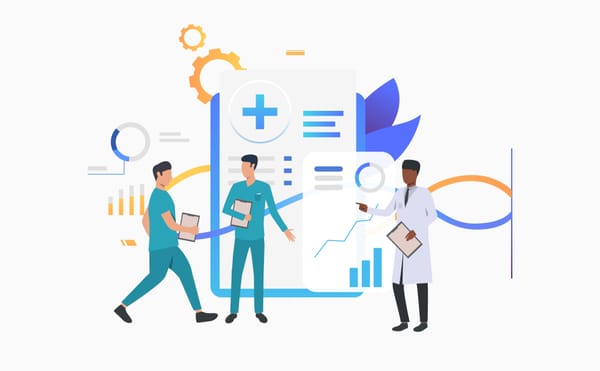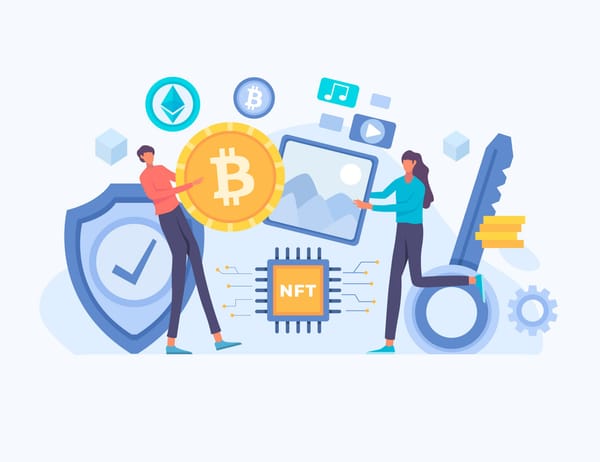2025 Strategic Technology Trends from Gartner: Future-Ready Insights

Imagine a future where technology helps organisations and transforms them into creativity, resilience, and efficiency engines. The future is not years away; it is happening right now, and staying ahead requires understanding which waves to surf.
Gartner Strategic Technology Trends for 2025 is a roadmap for businesses ready to embrace change and lead the way. This study outlines a clear vision map to success in an ever-changing world by focusing on the year's most revolutionary breakthroughs, organised into three major themes. Consider it guidelines for seizing opportunities, overcoming problems, and achieving overarching success in the digital world. Let's look at trends that will shape the future.
Source: Gartner Top 10 Strategic Technology Trends for 2025
Theme No. 1: AI Risks Are Shaping How Organisations Protect Themselves.
Agentic AI
Independent AI systems that understand user goals create and execute a strategy autonomously. These applications use a variety of AI approaches with traits such as memory, planning, environmental sensing, tool use, and adherence to safety regulations to complete tasks and achieve goals autonomously.
Gartner forecasts a major shift: By 2028, agentic AI will be embedded in 33% of enterprise software, transforming how AI handles 15% of routine work decisions compared to less than 1% in 2024.
This promising advancement in AI technology opens up new business possibilities and will lead to more efficient and effective decision-making processes.
Business rewards: A versatile team of AI agents created to support, lighten the load, and elevate human tasks and traditional applications.
Projected challenges: Strong safeguards are needed to ensure everything aligns with the provider's and user's goals and expectations.
AI governance platforms
As businesses use AI to increase productivity, they must address issues like ethics, bias, and data privacy concerns. AI governance systems help by ensuring responsible usage, regulating legal and ethical requirements, and monitoring fairness, transparency, and accountability.
Gartner predicts that by 2028, companies adopting AI governance platforms will see a 30% boost in customer trust and a 25% jump in regulatory compliance.
Business rewards: Create, monitor, and enforce AI regulations that promote ethical behaviours, improve knowledge of AI systems, expedite lifecycle management, and give transparent information to foster trust.
Projected challenges: AI rules vary by place and sector, making consistency challenging. The fragmented landscape makes it difficult to develop a cohesive AI strategy.
Disformation security
Innovative technical solutions improve digital network trust by ensuring accurate information, certifying authenticity, preventing impersonation, and tracking inappropriate content.
Gartner projects that by 2028, 50% of businesses will adopt disinformation security tools, a significant jump from less than 5% in 2024.
Business rewards: Secure businesses by improving identity verification, preventing account takeovers through ongoing risk analysis, and safeguarding brand reputation by quickly spotting and removing damaging narratives.
Projected challenges: The key to effectively addressing digital risks is a flexible, developing approach based on continuous learning and teamwork.
Theme No.2: Transformative Computing Advances Spur Businesses to Rethink Their Frameworks
Post-quantum cryptography(PQC)
Quantum-resistant encryption solutions are emerging to protect data from the potential risks of quantum computing.
Gartner predicts that by 2029, quantum computing breakthroughs will soon undermine the security of conventional asymmetric cryptography.
Business rewards: Stay secure with quantum-resistant encryption tailored to new computing technologies.
Projected challenges: Implementing post-quantum cryptography (PQC) algorithms is not as simple as swapping existing asymmetric algorithms since it introduces technical hurdles such as performance overhead and the requirement for thorough testing and validation.
Ambient Invisible Intelligence
Technology is seamlessly incorporated into its surroundings to facilitate intuitive human-computer interactions without disrupting the natural flow of the environment.
Gartner forecasts that by 2028, Early applications of ambient invisible intelligence will focus on urgent concerns, such as providing cost-effective asset tracking and sensing. This will allow firms to reduce operating expenses and improve overall efficiency.
Business rewards: Provides cost-effective, real-time tracking that increases efficiency and visibility across operations. Objects can also generate unforgeable digital identities, allowing them to reveal their origin, history, and essential information independently.
Projected challenges: Respecting user privacy through transparent permission processes while offering users the option to turn off data-collecting technologies for improved privacy management.
Energy-Efficient Computing
Environmentally friendly technology strengthens IT processes by integrating new hardware, optimised software, and sustainable infrastructure, resulting in enhanced efficiency and less environmental impact.
As per Gartner, IT organisations prioritise carbon footprint reduction as a key aspect of their plans.
Business rewards: Adapt to emerging demands for sustainability by deploying energy-efficient computing solutions that lower carbon emissions, decrease environmental impact, and meet new regulatory standards.
Projected challenges: Future-proofing IT requires businesses to invest in sophisticated technology, cloud technologies, and experienced staff. While the move increases efficiency, it also involves complex migrations, significant costs, and short-term energy price spikes.
Hybrid Computing
A flexible approach that combines classical and next-generation computing technologies, hybrid computing enables a versatile processing environment by integrating CPUs, GPUs, edge devices, and emerging technologies like neuromorphic and photonic computing.
Business rewards: Creating rapid connectivity, intelligent innovation settings through AI that redefines possibilities, automation that powers entirely autonomous systems, and human augmentation that revolutionises personalisation and computing at scale.
Projected challenges: Expert management is necessary for highly complicated technologies, whereas autonomous modules pose security issues, entail expensive experimental technologies and require flawless orchestration and integration.
Theme No. 3: Seamless Human-Tech Integration for a Smarter Future
Spatial Computing
Spatial computing transforms reality by incorporating digital aspects into physical locations, utilising augmented and virtual reality to provide highly immersive, interactive, and intuitive experiences.
Gartner predicts that by 2028, 20% of people will engage weekly with immersive, geoposed digital content, up from less than 1% in 2023, according to Gartner. This rapid growth underscores the rising adoption of spatial computing and AR-driven experiences in everyday life.
Business rewards: Meeting consumer demand for interactive and immersive digital experiences in gaming, education, and e-commerce while providing companies with cutting-edge visualisation tools to improve efficiency and decision-making.
Projected challenges: Despite developments, head-mounted displays remain prohibitively expensive, have usability flaws, and raise privacy concerns, making them less accessible to regular consumers.
Polyfunctional Robots
Versatile and high-performance robots improve automation by performing numerous tasks precisely and efficiently.
The rise of AI-driven robotics is accelerating, with Gartner predicting 80% daily engagement by 2030, a sharp increase from under 10% today, transforming industries and everyday life.
Business rewards: Increase productivity and ROI with a quick, risk-free deployment. No infrastructure modifications are required, assuring smooth scaling.
Projected challenges: The lack of standardised price and functionality criteria generates confusion for organisations evaluating solutions.
Neurological Enhancement
Combining neural networks as interfaces to improve cognitive function and performance.
Gartner predicts that by 2030, 60% of IT workers will integrate bidirectional brain-machine interfaces (BBMIs) into their workflows, accelerating from 2024 through employer and self-funded investments.
Business rewards: Personalised education, improved workforce safety, and human upskilling are transforming careers, while next-generation marketing is reshaping consumer experiences.
Projected challenges: Unidirectional brain-machine interfaces (UBMIs) or bidirectional brain-machine interfaces (BBMIs) come with significant challenges, including high prices, intrusive procedures, security flaws, and ethical questions about their influence on human cognition.




